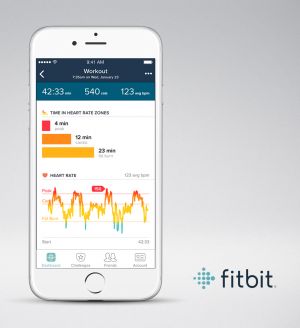What to Track When You’re Training for an Endurance Event
Track key metrics when you run, ride or race, and you’ll know where you’re going wrong or right. Here’s how the experts do it

Formula One teams do it. Olympians do it. Team Sky – currently riding the momentum of their fourth Tour de France win in five years – do it. And, increasingly, amateur runners and riders do it too: using tech to track performance variables in the pursuit of marginal gains, those tiny, incremental improvements in performance that can lead to a gold medal, a world record or even just a new PB.
If you’re going to do it yourself there are two obvious questions: what do you track and what do you do with the information once you’ve got it?
Track Distance
Runners have been tracking their weekly mileage for decades, although now the process is mercifully a bit easier than getting out an Ordnance Survey map and a bit of string. “Conventional wisdom is that you don’t up your training volume by more than 10% a week,” says running coach George Anderson. “But it’s definitely possible to push that if you’re being careful and taking recovery seriously.”
The Fitbit Surge uses advanced sensor technology to track the distance you travel as well as the amount of steps you climb, using a series of algorithms to sense automatically the difference between a running step and normal movement.
Getting it right is important because current endurance-distance wisdom holds that less can definitely be more – you improve during recovery, not running, so sticking to the distances in your training plan (if you’ve picked the right one) will give you the best bang for your training buck.
Track Speed and Pace
The biggest improvement brought on by GPS-enabled fitness trackers is the ability to track speed and pace. “It’s useful to be able to gauge how fast you’re going,” says Anderson, “and having a tracker will help with that. While training for my first Ironman this year, I kept my tracker on my handlebars. I find the data’s really useful for post-training analysis – how fast I tackled a certain hill, for instance, and my pace on different sections that I ride a lot. This can let me know if I’ve overtrained – if I’m going slower up the same hill at the same perceived level of effort. It can also let me know the training plan is working.”
Some training plans will ask you to run at either a rate of perceived exertion scaled out of ten, or if your coach knows you well, hit specific times for specific distances. It’s as important to make sure you don’t go too hard as too easy: the former will negatively affect your recovery, while the latter will reduce the training effect of your sessions.
Even if your training plan includes only distances, it’s always a good idea to know what pace you can comfortably keep up for three, five or ten miles, so you can finish as strongly as you start.
Tracking Heart Rate
Once the preserve of elite athletes and men willing to wear a mildly intrusive chest strap, heart-rate tracking is now available to anyone thanks to the new wave of HRM-enabled fitness trackers. These include the Fitbit Surge, which takes an automatic heart-rate reading every five seconds when the wearer’s at rest and every second when it senses a shift into active mode, using LEDs reflected on to the skin to sense and track changes in blood volume.

Heart-rate training is one of the most misunderstood parts of training but, says Anderson, that’s easily fixed. “If you’re planning to work off your maximum heart rate, or MHR, you’ll need to know what it is,” he says. The Surge uses the commonly accepted formula of 220 minus your age and allows you to work in three heart-rate defined zones – peak, cardio or fat burn – or set your own.
The peak zone, around 85% of your MHR, is what serious athletes sometimes call lactate threshold training – a pace designed to increase the intensity at which your body starts to accumulate blood lactate too fast for it to be continuously broken down. You’ll find this pace unsustainable for long efforts, so nudging it upwards is key to getting faster on foot or on a bike.
The cardio zone is designed to see you running at a pace that’s sustainable for longer sessions, while fat burn gets you into a level of exertion where the majority of calories your body is burning come from fat rather than glycogen, with minimal cortisol build-up. Fitbit Fifty competitors will want to focus on the first two zones, but for off-the-couch athletes all three will come in handy.
You’ll also want to measure your resting heart rate. “Take your heart rate as soon as you wake up in the morning for three mornings in a row, and take the average,” says Anderson.
Alternatively, wear the Surge to sleep and it will use a combination of heart rate data from your waking and sleeping hours to estimate your resting heart rate. A rate between 60 and 80bpm is considered healthy, although fit people may go as low as the 30s because their heart muscle is in better condition and can pump more blood around the body at each stroke.
“Remember, though, you won’t get a good indication of your resting heart rate the day after an intense training session, because it’s likely to be elevated,” says Anderson, “although this can also be a good indication of overtraining.” Waking up with your heart rate 10bpm above its normal resting rate every morning after a tough few days of training? It might be time to back off a bit.
Of course, there’s no substitute for hard work. “Any tracker you use is about monitoring intensity, or how hard you’re working, in real time,” says Anderson. “Tracking provides another level or layer to what you’re doing, and takes some of the guesswork out of your training.” That’s why top athletes do it and, with a bit of practice, why it will also work for you.
Get the Coach Newsletter
Sign up for workout ideas, training advice, reviews of the latest gear and more.
From 2008 to 2018, Joel worked for Men's Fitness, which predated, and then shared a website with, Coach. Though he spent years running the hills of Bath, he’s since ditched his trainers for a succession of Converse high-tops, since they’re better suited to his love of pulling vans, lifting cars, and hefting logs in a succession of strongman competitions.

